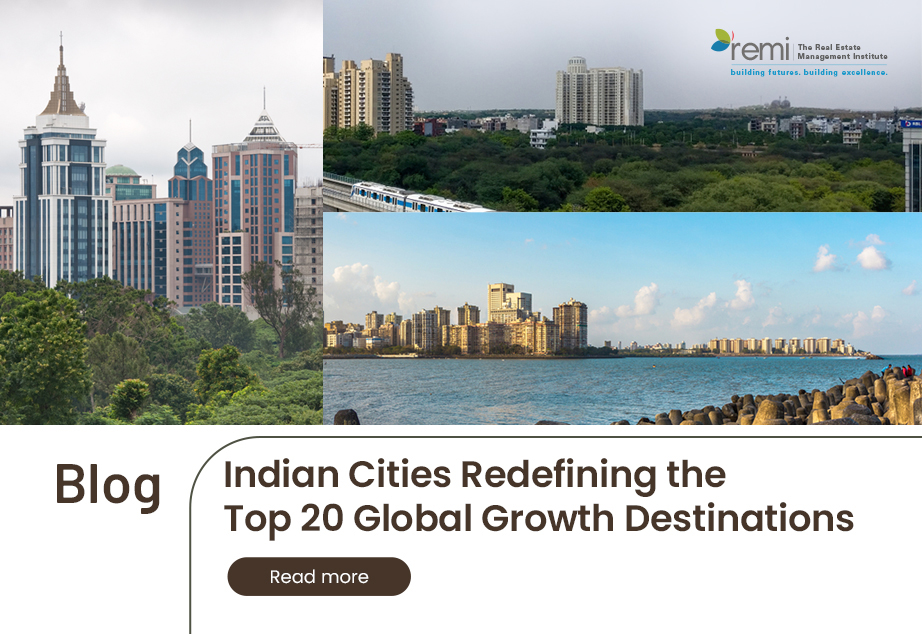The luxury housing boom in India is reshaping cities, propelling them into the top global growth destinations.
The latest report of Prime Global Cities Index (PGCI), Knight Frank, Q3 2023 paints a fascinating picture of the Indian real estate market. Mumbai, Delhi, and Bengaluru, three of India’s most prominent cities, have secured impressive positions within the top 20, showcasing their remarkable growth trajectory.
Here’s a glimpse of their unique characteristics:
Mumbai: India’s financial capital
India’s financial capital takes the lead by ranking 4th globally with a significant 6.5% annual price growth. This impressive feat surpasses established global players like Madrid, Seoul, Sydney…
- Economic Powerhouse: Mumbai, the financial capital of India, pulsates with energy. It hosts the Bombay Stock Exchange (BSE) and is home to major corporate headquarters.
- Real Estate Dynamics: Despite space constraints, Mumbai’s real estate market remains dynamic. Prime properties in areas like South Mumbai continue to attract high demand.
- Urban Challenges: The city grapples with overcrowding, traffic congestion, and housing affordability. However, ongoing infrastructure projects aim to enhance connectivity and ease urban woes.
Examples of Mumbai’s Offerings:
-
- High-rise apartments with breathtaking city or ocean views
- Luxurious penthouses offering unparalleled exclusivity and amenities.
- Waterfront properties in South Mumbai, boasting prestigious addresses and proximity to the sea.
Delhi: the capital city
The capital city, secures the 10th position with a commendable 4.1% change, surpassing the prime cities Perth, Lisbon, Beijing.
- Historical Significance: Delhi, the capital, boasts a rich historical legacy. From ancient monuments to modern architecture, it’s a blend of tradition and modernity.
- Sprawling Metropolis: Delhi’s National Capital Region (NCR) extends beyond its borders, encompassing satellite towns. It faces challenges related to urban sprawl and pollution.
- Smart City Initiatives: Delhi is part of the C40 Cities Network, focusing on sustainability and climate action. Transit-oriented development and green spaces are key priorities.
Examples of Delhi’s Offerings:
- Apartments in Lutyens Zone, known for its historical significance and prestigious address
- Heritage properties converted into exquisite high-end residences, offering a unique blend of history and modern
- Spacious villas in Gurgaon, provide a serene and luxurious living experience outside the bustling city center
Bangalore: the heart of India’s thriving IT sector
The heart of India’s thriving IT sector, also claims its place on the list, securing the 17th position with a 2.2% change, surpassing Paris, Jakarta, Miami…
- Tech Hub: Known as the Silicon Valley of India, Bangalore thrives on its tech ecosystem. It hosts numerous IT companies, startups, and research institutions.
- Garden City: Bangalore’s pleasant climate and greenery contribute to its quality of life. However, rapid urbanization strains infrastructure and leads to traffic woes.
- Smart Mobility: The city emphasizes smart mobility solutions, including metro expansion and electric buses. It aims to balance growth with environmental sustainability.
Examples of Bengaluru’s Offerings:
- Luxurious apartments in central locations offer convenient access to the city’s business districts and entertainment hubs.
- Gated communities featuring tech-enabled amenities like smart home systems and co-working spaces, catering to the needs of young professionals and tech-savvy residents.
- Sustainable and eco-friendly residences, constructed with green building practices and energy-efficient features.
A Glimpse into the Future of Indian Cities
The rise of Mumbai, Delhi, and Bengaluru in the real estate market reflects not just their individual strengths but also the broader trends shaping India’s urban landscape. These cities are microcosms of India’s diversity, each facing unique challenges and harboring ambitious aspirations. As they continue to evolve, they contribute significantly to India’s economic growth and global standing, shaping the future of the nation’s urban spaces.

